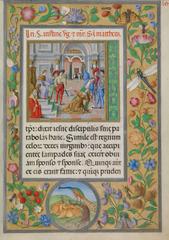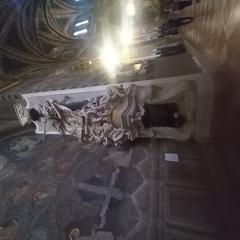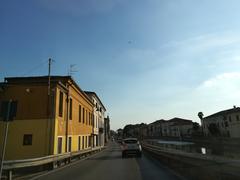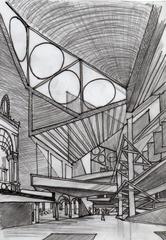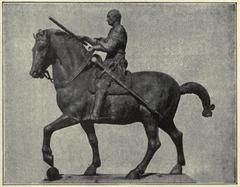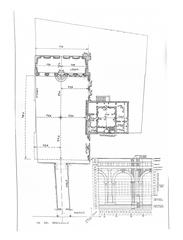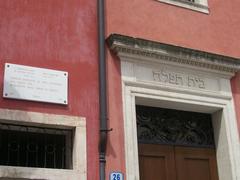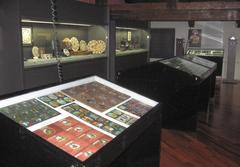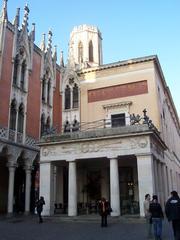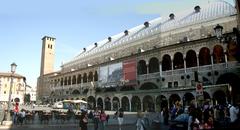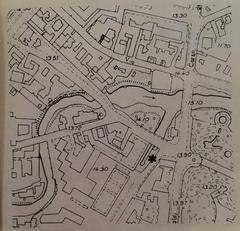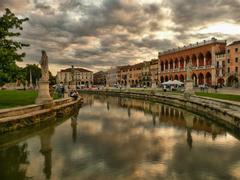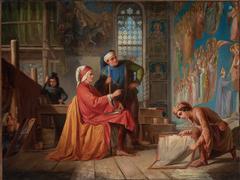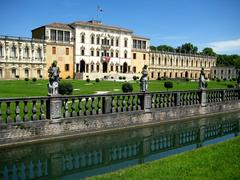Comprehensive Guide to Visiting Monte Fasolo, Padua, Italy
Date: 19/07/2024
Introduction
Nestled within the scenic landscape of the Euganean Hills in Padua, Italy, Monte Fasolo stands as a testament to the region’s rich historical and cultural legacy. From its ancient origins with the Veneti people to its prominence during the Roman era, Monte Fasolo has been a vital part of Italy’s historical tapestry. This comprehensive guide delves into Monte Fasolo’s multifaceted significance, offering visitors a thorough understanding of its historical roots, cultural importance, and the plethora of experiences it offers today. Whether you are an avid historian, nature enthusiast, or wine connoisseur, Monte Fasolo promises a unique and enriching travel experience. Be prepared to explore ancient ruins, indulge in world-renowned wines, and immerse yourself in the natural beauty of the Euganean Hills (Villa Barbarigo, Parco Regionale dei Colli Euganei).
Table of Contents
History of Monte Fasolo
Ancient Origins
Monte Fasolo, located in the Euganean Hills of Padua, Italy, has a rich history that dates back to ancient times. The Euganean Hills were formed by volcanic activity around 35 million years ago, creating a unique landscape that has been inhabited since prehistoric times. Archaeological evidence suggests that the area was settled by the ancient Veneti people, who were known for their advanced skills in metallurgy and trade. The Veneti established several settlements in the region, taking advantage of the fertile soil and strategic location.
Roman Era
During the Roman era, Monte Fasolo and the surrounding Euganean Hills became an important part of the Roman Empire. The Romans recognized the area’s potential for agriculture and viticulture, planting vineyards and olive groves that would become a staple of the local economy. The thermal springs in the region were also highly valued by the Romans, who built luxurious baths and resorts to take advantage of the therapeutic properties of the waters. The remains of Roman villas and baths can still be found in the area, providing a glimpse into the opulent lifestyle of the Roman elite.
Medieval Period
In the medieval period, Monte Fasolo and the Euganean Hills were part of the territory controlled by the powerful city-state of Padua. The region was dotted with castles and fortresses, built to defend against invasions and to control the valuable agricultural land. One notable structure from this period is the Castle of Monselice, which dates back to the 11th century and served as a key defensive stronghold. The medieval period also saw the establishment of several monasteries and religious institutions, which played a significant role in the cultural and economic life of the region.
Renaissance and Venetian Rule
The Renaissance brought a period of prosperity and cultural flourishing to Monte Fasolo and the Euganean Hills. The region came under the control of the Republic of Venice in the 15th century, which led to significant developments in agriculture, architecture, and the arts. The Venetian influence is evident in the elegant villas and gardens that were built during this time, many of which still stand today. The Villa Barbarigo in Valsanzibio, with its stunning baroque garden, is a prime example of the architectural and horticultural achievements of the period.
Modern Era
In the modern era, Monte Fasolo has continued to be a center of agricultural production, particularly known for its wine and olive oil. The region’s vineyards produce a variety of wines, including the renowned Colli Euganei DOC wines, which have gained international recognition for their quality. The thermal springs remain a popular attraction, drawing visitors from around the world to the spa towns of Abano Terme and Montegrotto Terme. The area has also become a destination for outdoor enthusiasts, offering opportunities for hiking, cycling, and exploring the natural beauty of the Euganean Hills.
Cultural Significance
Monte Fasolo holds significant cultural importance due to its long history and the preservation of its historical sites. The region’s rich heritage is celebrated through various festivals and events, such as the Festa della Giuggiola, which celebrates the local jujube fruit, and the Palio dei 10 Comuni, a medieval reenactment that takes place in Montagnana. These events provide a glimpse into the traditions and customs that have shaped the region over the centuries.
Preservation Efforts
Efforts to preserve the historical and natural heritage of Monte Fasolo and the Euganean Hills are ongoing. Several organizations and initiatives are dedicated to protecting the area’s archaeological sites, historical buildings, and natural landscapes. The Parco Regionale dei Colli Euganei, established in 1989, plays a crucial role in conserving the region’s biodiversity and promoting sustainable tourism. The park covers an area of approximately 18,694 hectares and includes numerous trails, educational programs, and conservation projects.
Visitor Information
Monte Fasolo Visiting Hours
Monte Fasolo is open to visitors year-round, with specific visiting hours varying depending on the season. It is recommended to check the official website or contact the local tourism office for the most up-to-date information on opening times.
Monte Fasolo Tickets
Entrance fees to Monte Fasolo and its attractions may vary. Tickets can typically be purchased on-site or online through the official website. Discounts are often available for children, students, and seniors.
Travel Tips
- The best time to visit Monte Fasolo is during the spring and autumn months when the weather is mild, and the landscapes are particularly beautiful.
- Wear comfortable shoes suitable for walking and exploring the hilly terrain.
- Bring a camera to capture the stunning views and historical sites.
Nearby Attractions
- Villa Barbarigo - A beautiful baroque garden located in Valsanzibio.
- Castle of Monselice - An 11th-century castle offering historical insights and panoramic views.
- Spa Towns - Abano Terme and Montegrotto Terme are renowned for their thermal springs and wellness centers.
Accessibility
Efforts have been made to make Monte Fasolo accessible to all visitors. However, due to the natural landscape, some areas may be challenging for those with mobility issues. It is advisable to contact the tourism office for specific accessibility information.
Special Events and Guided Tours
Monte Fasolo hosts various events throughout the year, including wine tastings, festivals, and historical reenactments. Guided tours are available and can provide a deeper understanding of the area’s history and significance.
Photographic Spots
- The summit of Monte Fasolo offers breathtaking panoramic views of the Euganean Hills.
- The ancient ruins and historical buildings provide excellent backdrops for photography enthusiasts.
FAQ
Q: What are the visiting hours for Monte Fasolo?
A: Visiting hours vary by season. Check the official website or contact the local tourism office for up-to-date information.
Q: How much are tickets to Monte Fasolo?
A: Ticket prices vary. Discounts are available for children, students, and seniors. Tickets can be purchased on-site or online.
Q: What are some nearby attractions to Monte Fasolo?
A: Nearby attractions include Villa Barbarigo, Castle of Monselice, and the spa towns of Abano Terme and Montegrotto Terme.
Q: Is Monte Fasolo accessible for visitors with mobility issues?
A: Some areas may be challenging due to the natural terrain. Contact the tourism office for specific accessibility information.
Conclusion
Monte Fasolo’s history is a testament to the region’s enduring appeal and significance. From its ancient origins to its modern-day attractions, the area offers a rich tapestry of cultural, historical, and natural wonders. Visitors to Monte Fasolo can explore its ancient ruins, enjoy its renowned wines, and immerse themselves in the beauty of the Euganean Hills, making it a truly memorable destination. For more information, download our mobile app Audiala, check out related posts, or follow us on social media for updates.
References
- Villa Barbarigo, retrieved 2024, Villa Barbarigo
- Parco Regionale dei Colli Euganei, retrieved 2024, Parco Regionale dei Colli Euganei
- Monte Fasolo Vineyard, retrieved 2024, Monte Fasolo
